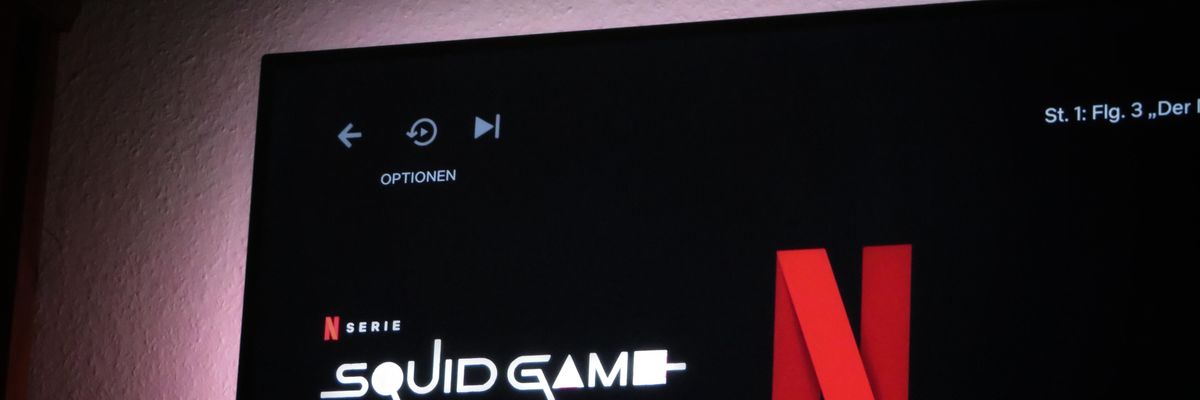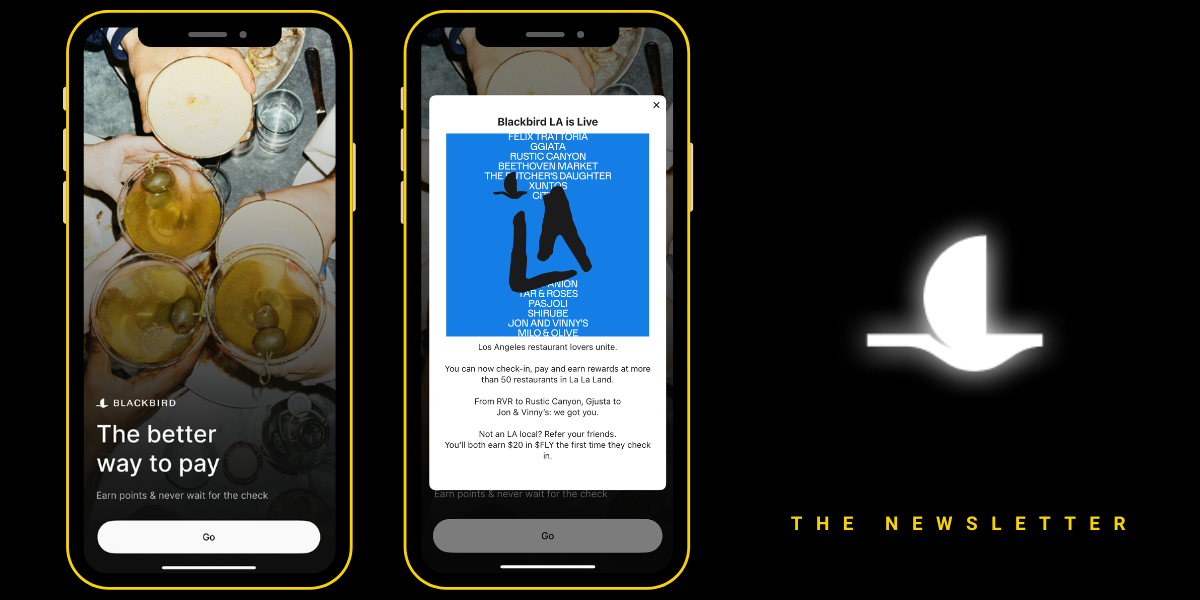

Get in the KNOW
on LA Startups & Tech
X
Photo by Jonas Augustin on Unsplash
Netflix Turns To Asia To Boost Its Stalled Subscriber Growth
Christian Hetrick
Christian Hetrick is dot.LA's Entertainment Tech Reporter. He was formerly a business reporter for the Philadelphia Inquirer and reported on New Jersey politics for the Observer and the Press of Atlantic City.
Netflix will invest more in Asia in a bid to revive its sluggish subscriber growth, betting on the lone region where the company added customers during an otherwise disappointing first quarter.
Bloomberg reported Monday that the streaming giant will grow its investment in Asia despite plans to reign in spending overall across the company. That will include financing the production of local films and series for that market, Tony Zameczkowski, Netflix’s vice president of business development for Asia Pacific, told the news outlet.
The streaming service has lost roughly 70% of its market value this year, due in large part to the company losing customers for the first time in a decade last quarter. Things aren’t expected to improve in the current second quarter, either with Netflix predicting a net loss of 2 million subscribers.
But Asia is the one market where Netflix has made gains this year, adding 1.1 million subscribers during the first quarter. The company will likely try to reproduce the success it found with South Korean hits like “Squid Game”—Netflix’s most-watched show ever—and “Hellbound,” as well as ramp up its Japanese anime portfolio.
Still, the Asia region presents political and profit challenges, such as countries seeking to restrict certain content within its borders and lower revenue per customer compared to North American subscribers, Bloomberg noted.
Facing heightened competition from tech and legacy media giants, Netflix is trying all sorts of things to remain atop the streaming market. It’s planning to crack down on password sharing, introduce advertising and expand into gaming to add or hang onto paying customers.From Your Site Articles
- 'Squid Game' Helps Netflix Add 4.4 Million Subscribers in Q3 - dot.LA ›
- The Latest Signs of Netflix's Loosening Grip - dot.LA ›
- While Netflix Reels, Disney Plus Adds Another 7.9 Million Subscribers ›
- Netflix Launches Gaming Studio Despite Troubling Forecast - dot.LA ›
Related Articles Around the Web
Christian Hetrick
Christian Hetrick is dot.LA's Entertainment Tech Reporter. He was formerly a business reporter for the Philadelphia Inquirer and reported on New Jersey politics for the Observer and the Press of Atlantic City.
Resy Cofounder’s New App Lands in LA: A Loyalty Tool Restaurants Actually Want
10:08 AM | October 24, 2025
🔦 Spotlight
Hello LA,
Blackbird, the loyalty and payments startup from Resy and Eater co-founder Ben Leventhal, officially landed in LA this week. The product is simple in the wild: you check in, pay through the app, and earn rewards that restaurants can actually act on, helping them spot and serve regulars without guessing. The LA launch goes live with more than 50 partners centered on the Westside, including names like Gjelina and Felix, plus spots across groups such as Rustic Canyon and Citrin, with expansion planned beyond Venice and Santa Monica.

Under the hood, Blackbird has been building a national network and says it is live at more than 1,000 restaurants. The company raised fresh capital earlier this year to expand markets and roll out cross-restaurant rewards, positioning LA as a key beachhead for growth. If you dine out a lot, the appeal is that the app collapses discovery, payment, and loyalty into one flow. If you run a dining room, the promise is cleaner data on guests you actually see, instead of a generic points program that lives somewhere else.
For LA specifically, the draw is that this model fits how the city eats. We spread across neighborhoods, follow chefs, and rotate between a small set of favorites and a long list of next-ups. A networked loyalty layer that recognizes that pattern could move real dollars, particularly for independents that want to keep the relationship direct. We’ll be watching how quickly the footprint moves east from the coast and which operators lean into memberships and targeted rewards first.
Scroll for this week’s LA venture deals, funds, and acquisitions.
🤝 Venture Deals
LA Companies
- GammaTime, a Los Angeles based premium micro drama platform founded by former Miramax CEO Bill Block, raised $14M seed led by vgames and Pitango, with participation from Alexis Ohanian, Kris Jenner, Kim Kardashian, and Traverse Ventures. The app is live on iOS and Android, features more than 20 vertical phone native originals, and plans new series from “CSI” creator Anthony E. Zuiker as it scales a freemium model for U.S. audiences. - learn more
- Wolf Games, a generative-AI gaming startup backed by Dick Wolf, raised a $9M Series A led by Main Street Advisors. The company also inked a partnership with NBCUniversal to develop interactive games using NBCU IP, built on Wolf Games’ platform for creating “living, cinematic” game worlds. Notable participants include Maverick Carter, Tom Werner, and Rashid Johnson, alongside returning investors Jimmy Iovine, Paul Wachter, and Dick Wolf. - learn more
- Quantum Elements, a Los Angeles based startup, launched Constellation, an AI native platform that helps teams build quantum software and co design hardware using agentic AI, natural language prompts, and a large noisy qubit simulator. The company emerged from stealth with funding from QDNL Participations and support from USC Viterbi, and says Constellation can speed code generation, debugging, and testing for applications in pharma, energy, and finance. - learn more
- Arbor Energy raised a $55M Series A co-led by Lowercarbon Capital and Voyager Ventures, with Gigascale Capital and Marathon Petroleum Corporation participating, to accelerate deployment of its zero-emission, fuel-flexible turbines. The funding completes a 1 MW pilot called ATLAS and advances HALCYON, a 25 MW modular turbine that uses oxy-combustion with supercritical CO₂ for efficient, carbon-neutral baseload power aimed at data centers, utilities, and industrial customers. - learn more
- Dialogue AI raised a $6M seed led by Lightspeed Venture Partners to scale its AI-native research platform, which uses a live conversational AI interviewer to run real-time customer interviews and deliver insights faster. Participants include Seven Stars, Uncommon Projects, the Tornante Company, and notable angels, and the funds will accelerate product and go-to-market efforts with early customers such as Wayfair, Square, Nextdoor, and Suno. - learn more
LA Venture Funds
- March Capital participated in Uniphore’s $260M Series F, joining strategic investors NVIDIA, AMD, Snowflake, and Databricks. The funding will accelerate development and adoption of Uniphore’s Business AI Cloud and expand its partner ecosystem, alongside investors like NEA, BNF Capital, National Grid Partners, and Prosperity7 Ventures. - learn more
- Beast Ventures participated in Nutropy’s latest funding round to scale precision-fermented casein for next-gen dairy ingredients. The France-based startup will use the capital to ramp production and deliver larger samples of its “cheeseable milk” powder to food manufacturers as it targets a 2027 launch. - learn more
- Patron participated in Notch’s $8M seed financing round, alongside investors such as Wing, Samsung, and Balaji, to scale the company’s AI platform for generating performance ads. Notch has since launched a “URL-to-animated-ads” feature that turns a product link into ready-to-run animated creatives within minutes, supporting a faster workflow for marketers rolling out motion ads. - learn more
- B Capital participated in CurbWaste’s $28M Series B, which was led by Socium Ventures with Flourish Ventures, TTV Capital, and Squarepoint Capital also joining. The funding brings total capital to $50M and will accelerate product and go-to-market work on CurbWaste’s operating system for independent waste haulers, including AI-driven dispatch, reporting, and payments. - learn more
- Thin Line Capital participated in SenseNet’s $14M Series A to scale its AI wildfire-detection network in the United States. The round was led by Stormbreaker with Fusion Fund, Plaza Ventures, FOLD36 Capital, and B Current also joining; funds go toward new offices and installations as SenseNet fuses gas sensors, AI cameras, satellites, and weather data to spot fires before they are visible. The company says it already monitors about 130 million acres and can flag ignitions within minutes. - learn more
- MANTIS Venture Capital participated in Keycard’s $38M financing for its identity and access platform for AI agents. The combined seed and Series A were led by Andreessen Horowitz, Acrew Capital, and Boldstart Ventures, and coincide with Keycard’s early-access launch. Keycard says its system issues short-lived, auditable identity tokens to help developers govern agent actions and data across apps. - learn more
- WndrCo participated in Defakto’s $30.75M Series B, a round led by XYZ Venture Capital with The General Partnership and Bloomberg Beta also joining. Defakto, formerly SPIRL, builds a Non-Human Identity and Access Management platform that replaces static credentials with dynamic, auditable identities for services, pipelines, workloads, and AI agents across multi-cloud environments. The company will use the capital to accelerate product development and expand go-to-market efforts. - learn more
- CIV co led 1001’s $9M round alongside General Catalyst and Lux Capital to build an AI native operating system for decision making in critical industries. 1001 combines live data ingestion, operational mapping, AI driven decisioning, and governance to help operators act in real time, with early pilots in aviation, logistics, and large infrastructure projects. The raise also includes backers like Chris Ré and Amjad Masad and will fund early deployments and hiring in Dubai, London, and beyond. - learn more
- Brentwood Associates led Throne Labs’ $15M Series B initial close to expand the company’s smart restroom infrastructure across new and existing U.S. markets. Existing investors including Uncorrelated Ventures, DiPalo Ventures, Rabil Ventures, and Arpiné Capital participated as Throne scales its network of sensor-equipped, ADA-compliant restrooms and city partnerships. - learn more
- M13 led Estuary’s $17M Series A, with participation from FirstMark and Operator Partners, to scale the company’s “right-time data” platform. Estuary unifies change data capture, streaming, and batch into one managed system with BYOC deployment so enterprises can control latency and feed AI applications more reliably; funds will support product and go-to-market expansion. - learn more
- Strong Ventures provided follow-on funding in Unjeonseonsaeng’s ₩2.8B (~$2.0M) Series A, backing the driving-school comparison and booking platform as it scales nationwide. New investors Fast Ventures and Korea Credit Guarantee Fund joined the round, with proceeds going to expand the company’s SaaS tools for driving schools and enhance data-driven features like AI recommendations and advertising. The startup reports monthly GMV above ₩1B and its first profitable quarter in 2025. - learn more
- Interlagos led Adaptyx Biosciences’ $14M seed, with Hyperlink Ventures participating alongside Overwater Ventures, Starbloom Capital, Stanford University, the Chan Zuckerberg Biohub, and others. Adaptyx is developing a biowearable for continuous, multi-analyte molecular monitoring; the raise brings total funding to about $23M and supports R&D, clinical progress toward FDA clearance, and platform scaling. - learn more
- B Capital participated in Faeth Therapeutics’ new $25M financing, which brings the company’s total funding to $92M and supports a randomized Phase 2 trial of its PIKTOR regimen in endometrial cancer with the GOG Foundation. The raise, led by S2G Ventures with additional new and existing backers, follows Phase 1b data showing an 80% overall response rate and 11-month median PFS when PIKTOR was combined with paclitaxel. - learn more
- Btech Consortium participated in PortX’s strategic growth round, joining renewed backers alongside new investors Allied Solutions and the American Bankers Association. The funding extends PortX’s Series B and underscores industry support for its AI-powered data integration platform for banks and credit unions. - learn more
LA Exits
- Breez was acquired by JumpCloud to bolster JumpCloud’s identity threat detection and response capabilities and accelerate its security roadmap. The deal brings Breez’s ITDR technology and team into JumpCloud’s platform; terms were not disclosed. The Breez group is led by former Adobe executive Abhinav Srivastava. - learn more
Read moreShow less
🔦 Spotlight
Hello Los Angeles,
ServiceTitan is making it clear: the trades are getting a tech glow up. At its annual Pantheon conference in Glendale, the home services software giant rolled out a bold AI vision and topped it off with a fresh acquisition that could change the way HVAC contractors do business.
First, the AI. ServiceTitan unveiled what it calls the “next evolution” of its platform, and this is not just window dressing. Think automated call summaries so techs spend less time typing, predictive scheduling that knows when your AC is likely to fail before you do, and estimates that generate faster than a homeowner can ask, “So, how much is this going to cost me?” For small and mid sized contractors, these are the kinds of tools that level the playing field against the big chains and maybe even help them get home before dinner. It is AI built not for hype, but for the day to day grind of the trades, where minutes saved can mean jobs won and customers kept.
Then came the news that ServiceTitan is acquiring Conduit Tech, a Boston startup best known for its LiDAR powered HVAC design software. Instead of squinting at tape measures and crunching numbers in clunky spreadsheets, contractors can now scan a home, generate a 3D model, and deliver a polished, ACCA certified proposal on the spot. Translation: faster bids, more trust, and fewer “I will get back to you next week” moments.
Put together, the AI rollout and Conduit deal are more than product updates. They are a signal of where ServiceTitan wants to take the industry. This is not just software that keeps the books balanced or trucks dispatched. It is an attempt to make technology an advantage in a field where labor is scarce, expectations are high, and every interaction with a customer matters. In short, ServiceTitan is not just keeping the lights on, it is rewiring how the trades get work done.
🤝 Venture Deals
LA Companies
- Modern Animal has hit a $100M annual run rate and closed a new $46M funding round led by Addition, True Ventures and Upfront Ventures with participation from Founders Fund. The company delivers veterinary care both in clinics and virtually, and it is using the funds to expand services such as specialty care, 24/7 virtual access, integrated pharmacy and ecommerce, along with extended urgent care hours. The company also announced a board expansion with new leadership added to support scaling operations and enhancing its technology infrastructure. - learn more
- MarqVision raised a $48M Series B round led by Peak XV Partners, with participation from investors including Salesforce Ventures, HSG, Coral Capital, and returning backers like Y Combinator and Altos Ventures. Based in Los Angeles, MarqVision offers AI-powered brand protection tools—monitoring marketplaces, removing counterfeit listings, managing trademarks, and protecting brand reputation online. The new funds will go toward expanding its AI and engineering teams, accelerating automation, enabling enterprise-grade features, and growing its global presence in markets like Japan, Korea, China, Europe and beyond. - learn more
- Divergent Technologies raised $290M in a Series E round led by Rochefort Asset Management, with $250M in equity and $40M in debt, bringing its valuation to about $2.3 billion. Using its proprietary DAPS (Divergent Adaptive Production System) platform, the Torrance based company builds hardware for aerospace, defense and automotive sectors by combining rapid design, additive manufacturing and automated assembly. The new capital will help Divergent scale its manufacturing capacity, build out its team and develop new capabilities for upcoming product lines. - learn more
- Apex raised $200M in a Series D round led by Interlagos, giving the Los Angeles company a valuation above $1 billion. Apex builds configurable “satellite bus” platforms used by commercial and government clients, including for communications, sensing, and national security constellations. The capital will boost production capacity by 50 percent, expand its manufacturing footprint in Los Angeles, and strengthen vertical integration including acquiring propulsion technology and insourcing more subsystems. - learn more
LA Venture Funds
- Mantis Venture Capital joined Benchmark, Uncork, Y Combinator and Mayfield in backing Numeral’s $35M Series B, part of a $57M total funding haul. Numeral is an AI powered platform that automates everything around sales tax for e-commerce and SaaS brands including filing, remittance, exemption certificates, state registrations, nexus detection and more. The money will go to speeding up product innovation, building out its global compliance footprint, and adding smarter automation so finance teams can stop wrestling with tax rules and start scaling. - learn more
- Magnify Ventures participated in Series A for Seven Starling, contributing to an $8M funding round led by Rethink Impact. Seven Starling is a virtual women’s mental health company focused on maternal mental health, offering group therapy, medication management, patient advocates, and digital tools. The new capital will fuel its expansion into more U.S. states (aiming for over 30 by the end of 2026), deepen partnerships with healthcare providers, and scale its model to help more mothers. - learn more
- Calibrate Ventures led Vibranium Labs’ $4.6M seed round, joined by Mirae Asset and investors including a16z and Franklin Templeton. Vibranium Labs’ flagship product, “Vibe AI,” acts as a full-time AI incident engineer, monitoring, triaging, and resolving IT incidents automatically. The funds will be used to expand the engineering team, accelerate product development, and deepen integrations so Vibe AI can be embedded into more incident response systems across industries. - learn more
- B Capital led a $20M financing round in Extend, with additional participation by March Capital, Point72 Ventures, FinTech Collective, and Commerce Ventures. Extend, a spend-and-expense management platform, allows businesses to use virtual cards with their existing bank or card programs while offering workflow tools like receipt capture, approvals, and automated reconciliation. The new capital will help Extend scale issuer partnerships, launch new expense management services, accelerate its path to profitability, and the company also added Francois Horikawa as CFO to help guide the financial strategy forward. - learn more
- Alexandria Venture Investments joined Versant Ventures and Qiming Venture Partners USA in a $65M Series A for Dualitas Therapeutics, a South San Francisco company developing bispecific antibodies through its DualScreen discovery engine. Dualitas is advancing two lead programs, DTX-103 for allergic disease and DTX-102 for autoimmune conditions, both showing strong preclinical results. The funding will support these programs and expand the company’s platform to discover new bispecific candidates in immunology, inflammation and beyond. - learn more
- Oversubscribed Ventures joined a syndicate that invested in Noble Mobile’s $10 million seed round. Noble Mobile, founded by Andrew Yang, is a telecom startup offering unlimited data plans while giving customers cash back when they use less data. The funds will be used to launch operations, roll out its mobile virtual network service, and build features that encourage better digital wellness. - learn more
- Mantis Venture Capital participated in Doctronic’s $20M Series A round, which was led by Lightspeed Venture Partners and also backed by Union Square Ventures, Tusk Ventures, Seven Stars, and others. Doctronic is a healthcare AI startup building a platform for fast, personalized medical advice and virtual visits with licensed physicians, aiming to reduce wait times and costs. The new funds will help the company scale its operations across the U.S., expand partnerships with insurers and health systems, and extend its reach to more patients. - learn more
- Strong Ventures led a Series A round investing about ₩1 billion in Ares3, with Seoul National University Technology Holdings also participating. Ares3 runs florist subscription service “Honest Flower” for consumers and “FlowerGo,” a B2B platform for floral suppliers, with steady growth thanks to brand partnerships and solid demand. The new capital will help Ares3 extend its reach via offline experience locations and campaigns to shift public perception of flowers from luxury to everyday goods. - learn more
- Gold House Ventures participated in MedSetGo’s oversubscribed $2.4M seed round led by TurboStart. MedSetGo is an AI-driven healthcare company based in San Francisco that is working to streamline patient care transitions by helping people find and schedule the right care after discharge. The funding will go toward accelerating product development and hiring, especially expanding the engineering, data science, and commercialization teams. - learn more
- March Capital was among the investors in Lila Sciences’ $235M Series A round, which was co-led by Braidwell and Collective Global. Lila builds an autonomous science platform combining AI, robotics and software to automate the scientific method - generating hypotheses, designing experiments, running them, learning from results. The funds will be used to scale Lila’s “AI Science Factories,” expand globally in cities like Boston, San Francisco and London, and accelerate its ability to explore materials, chemistry, life sciences and diagnostics more quickly. - learn more
Read moreShow less
RELATEDTRENDING
LA TECH JOBS


